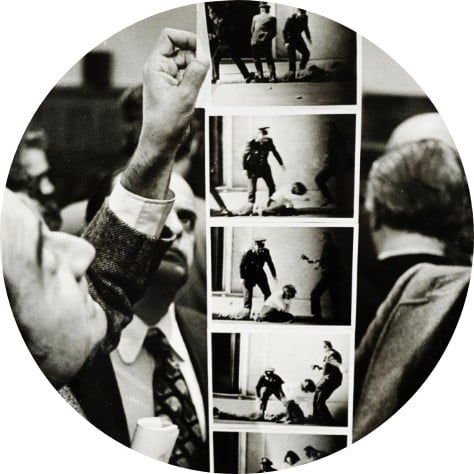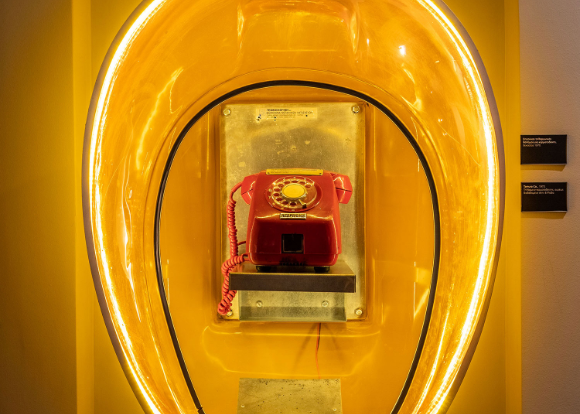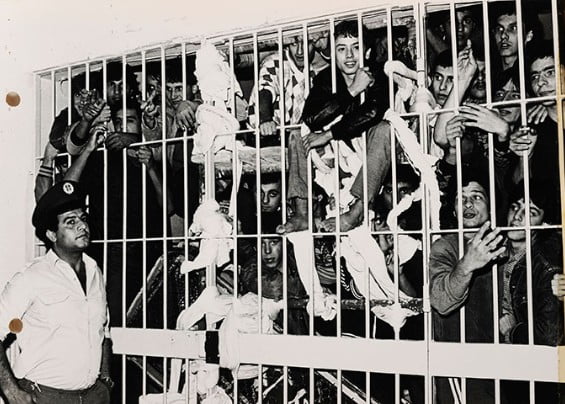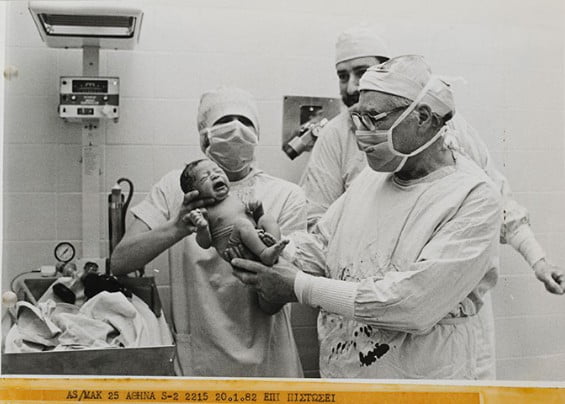Telephotography
The archive's identity
The OTE Group Telecommunications Museum’s archive consists of photographs taken or sent via OTE’s telephotography service to 35 newspapers in Athens and Thessaloniki, depicting various aspects of Greece’s political, social, sports, and cultural life. It contains 13,320 telephotographs that cover the time period from 1949 to 1988. The stamps on the back of the photographs attribute them to 94 separate photographers and photography agencies, and the vast majority are photojournalism. The archive has been divided into 11 thematic categories and has been placed into 133 archive boxes in a specially created area of the Museum, and it has been fully digitised.

Select a category
History
The creation of the archive is connected to the operation and development of OTE’s telephotography service, as well as to the spread of fax machines throughout Greece. The transmission of photographs and texts from a distance, via telegraphy and telephony networks, a popular and commercialised method in Europe and America since the 1920s, became a reality in Greece in 1949, with the installation of the telephotography machine at the Athens Central Telegraph Office, and with its partnership with the Cable & Wireless company, which allowed for the radiotelegraphy connection (wirephoto broadcasting) to London and New York.
The service operated 24 hours a day, 365 days a year, and it ended its operations in 1991, as the commercial availability and spread of fax machines in Greece essentially made the service obsolete. Most of the thousands of telephotographs collected were gathered and stored in the OTE building at No 25 Proteos Street in Nea Kifisia in the mid-1980s.
History through the telephotograph collection
Until the late 1960s, the telephotography service circulated only photographs sent to the Greek press from abroad. After that point, there is a clear shift in both the subject matter and the style and nature of the material. Specifically, the first two decades (the 1950s and 1960s) mainly produced photographs of political and high society figures at official visits, conferences, and events abroad. This series of images consisted of an endless parade of prime ministers, aristocrats, actors, opera divas, or beauty pageants. From the mid-60s onwards, photographs started to appear depicting student marches and worker protests.
In the early 1970s, as the Athenian newspapers had direct access to photographs from abroad, OTE’s telephotography service almost exclusively sent domestic photojournalism content. From this point onwards, police reportage took the lead, with scenes of violence and natural disasters dominating the content. At the same time, however, the various expressions of Greece’s social life were captured. Alongside daily news, marginalised groups or dynamic minorities tried to gain access to publicity.


Permanent Exhibition
"The museum continues to operate online! We stay Connected, we stay curious ”- this is the motto of the Telecommunications Museum.
Find out more
MT Stories
The telecommunications' past is full of fascinating and unexpected stories!
Find out more

Permanent Exhibition
"The museum continues to operate online! We stay Connected, we stay curious ”- this is the motto of the Telecommunications Museum.
Find out more
MT Stories
The telecommunications' past is full of fascinating and unexpected stories!
Find out more






